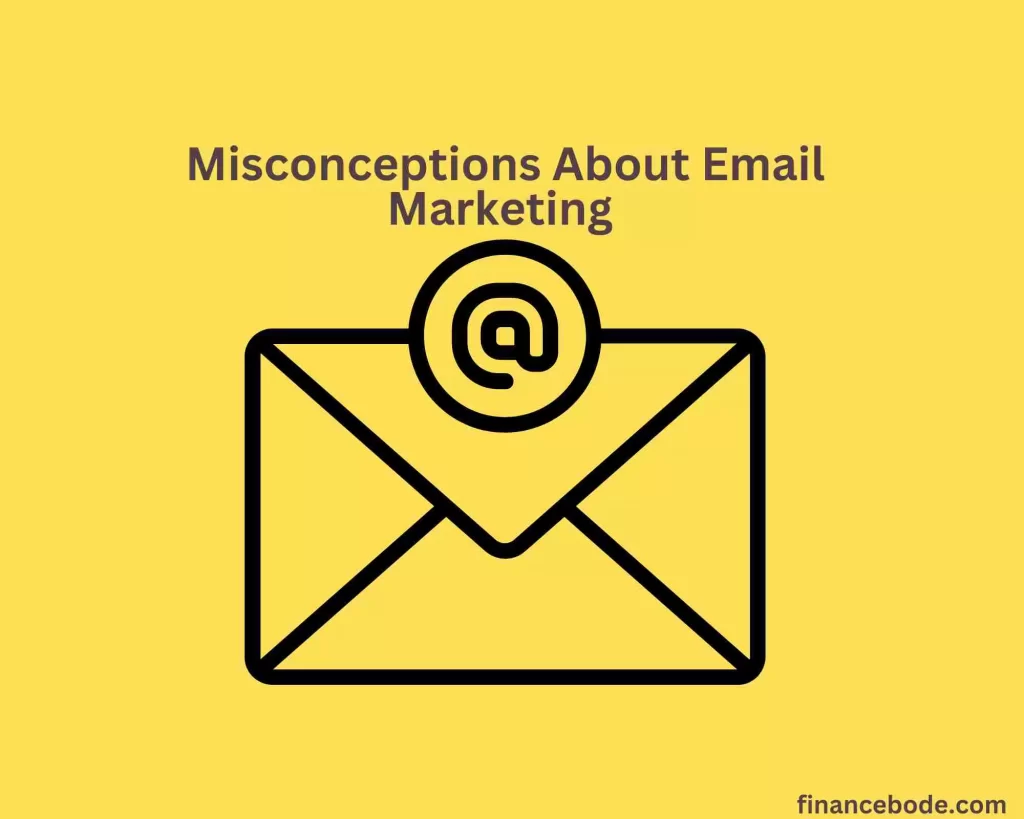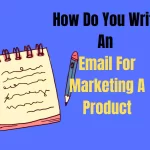There are a lot of misconceptions about email marketing nowadays. Email marketing has grown so widespread that the difficulties around it have come to the forefront.
Quite a few people using email marketing do not achieve the results they want. They believe this marketing tool to be old-fashioned and no longer acceptable to contribute to Digital Marketing strategy.
Nevertheless, the truth is exactly the reverse. It is no accident that from 2018 till now, email marketing has provided businesses with the best R.O.I. (up to 4200%) among online advertising channels.
In this post, I will clear up some misconceptions regarding email marketing. It is these beliefs that contribute to email marketing needing to be fixed.
Follow the content below.
Misconceptions About Email Marketing
Misconception 1: Email marketing doesn’t work in the long term
This is the most typical fallacy when people talk about Email Marketing. Many individuals assume that email is less popular than social networking or online messaging tools. These advertising messages need to attract attention. No customers will notice them at all.
But you need to know:
As mentioned earlier, “Email Marketing is not effective in the long term” is a fallacy that must be addressed quickly.
Misconception 2: Consumers may assume I’m spamming them
Are all the marketing emails we receive everyday spam? The basis for this misperception arises from the email marketing approach of marketers. They do not comprehend two ideas Email spam and Email marketing. This leads to a bad view of customers with their marketing.
Expert marketers know that Email Marketing is permission-based.
Sending marketing emails without the agreement of the receiver is a type of spam. But running permitted advertising efforts is completely different.
• Email Spam
Fundamentally, those are unsolicited letters. It was sent by a corporation that had no prior interaction with the recipient. The receiver did not disclose any contact information to them.
Spammers commonly generate lists of email addresses by purchasing and selling data, utilizing email scanning software, or getting free data from the Internet.
• Email Marketing (permission based)
Permission-based email marketing is different. Marketers that utilize this strategy have gotten approval from the receiver in advance. At the same time, the same receiver has decided to disclose information to the contact marketer.
This is regarded as the most successful form of market positioning, easiest to track, and instant outcomes can be observed.
Effective email marketers typically have a very solid awareness of the distinction between the two. 78% of consumers polled in recent research stated they want to get emails from their favorite businesses.
Hence, according to the facts mentioned earlier, you would only gain the possibility to contact great prospective clients if you respect email marketing.
Misconceptions 3: Email marketing campaigns will give senders a bad reputation
Obviously, these persons with this misperception need to gain knowledge and understanding of email marketing.
You run an email marketing campaign, but the letters are designed to be messy. Spelling issues or recurring advertising frequency will undoubtedly anger the recipient…. All these new factors lead to customers having bad ratings of the company.
Take the time to establish and arrange a reasonable marketing timetable. It will make a major impact on your campaign.
Some notes to increase the quality of email marketing campaigns:
Misconception 4: Free email marketing services are enough to meet needs
Free is good. But not enough for the rising demands of the firm. If you email it manually, it will be difficult for you to conduct the campaign.
In addition, your email address when emailing in bulk may be banned at any time. Free email services always come with a restriction of sending per day.
Needless to say, your transmitting reputation and I.P. address won’t be secured. They are in great danger of being complained about at any time.
If your reputation/I.P.I.P. has been evaluated badly, most marketing emails will land in the recipient’s spam folder. This considerably influences the performance of the marketing campaign.
Paying for email marketing services is completely worth it. The elements provided in it will help you finish and receive a more comprehensive program.
Misconception 5: Few people use email
The time we spend on email channels will undoubtedly be smaller than the active time on channels like Facebook, Twitter, and Instagram,… But that doesn’t imply fewer people use email!
As stated above, anybody active on the Internet has an email to sign up for an account and to keep in contact. Many individuals even have more than 2 emails, one for personal usage (such as social networking and paying bills) and another for work or business.
If you send an email to 100 customers and 98 people don’t click to view the second email, then the fault rests with your audience strategy, and the email content is not quality, not because of the email channel. Marketing doesn’t have many users.
Up to 247 billion emails are sent, and 90% of people aged 15-65 have at least one email account. This is probably the most successful marketing approach, reaching a wide range of clients with the least cost.
Misconception 6: Consumers will unsubscribe from your email list
Many businesses fear that clients would unsubscribe from receiving emails if they send them promotional and sales communications. But, when consumers have submitted their email to you, it shows they are interested in the product/service and ready to receive helpful information about it.
Consumers are compelled to unsubscribe from your list when your email campaign goes the wrong way. According to a report by Hubspot, 51% of customers unsubscribe because they receive too many emails from a business. 91% of poll respondents claimed that the advertising material made them dissatisfied. Therefore, they opted to unsubscribe.
Email marketing helps firms develop long-term relationships with clients. Each type of email has its function to retain customers and increase their loyalty (such as welcome emails, notification emails, gratitude emails, account update emails, comments collection emails, etc.) ) When businesses invest in email marketing more sophisticated, bringing high benefits, customers will not abandon you.
Misconception 7: Email marketing costs a lot
Email marketing is the cheapest method of marketing nowadays. The cost of email marketing software is the lowest compared to internet advertising solutions. Not even 1/10 of a Google or Facebook ad.
Misconception 8. Email marketing is hard to create and hard to execute
In truth, even for rookies, starting an email marketing campaign is not that difficult. With only a few steps: Setup the email list, submit material, deploy, etc. Of course, these are all fundamental stages. To have a professional and highly effective email marketing strategy, you will need more than that.
If your firm does not have a crew ready to develop emails that are eye-catching and gorgeous, employ email-sending software. Nowadays, email marketing platforms combine numerous valuable functions. Includes free template support. You may use them to personalize your content.
Misconception 8. The more information a marketing email has, the better
Email marketers typically feel that the more information supplied to the consumer, the better. So they attempt to write as long as they can. This is an absolutely inappropriate approach when it comes to email marketing.
How many individuals will take the time to read a long email? This ratio is not much. Needless to say, the volume of information would make buyers confused.
Up to 80% of clients simply read the first 3 paragraphs and then decide whether to continue reading or not. You should deliver content that is easy to read, brief, and express vital facts clearly.
Misconception 9: All consumers will open my marketing emails
Everyone creating email marketing also believes in a sunny future. It is when clients click to watch and feel enthusiastic about the content. They will instantly click and buy the goods.
Yet, most of the time, this will not turn out as you would desire. A lot of clients won’t open emails for a number of reasons: No time to read; The message has slipped into spam; The subject is not relevant to the recipient, etc
One of the things that impact email opening is the subject line. See also: How to create catchy subject lines.
Misconception 10. With email marketing, sales will increase instantly
Doing email marketing does not mean that sales will grow instantly. In order to sell items, it takes the coordination of various departments: Telephone staff, sales personnel, pricing, competitors…etc.
Let’s imagine your email has thoroughly convinced the recipient of the product/service. But if the consultant does not do well, your firm will not sell.
Hence, to generate sales rapidly, you and your organization need a consistent and thorough image of your promotional campaign and sales plan.
Conclusion
I have analyzed 10 misconceptions about email marketing. Don’t let the above thoughts make you miss this great promotional channel. By 2022, an estimated 4.25 billion users on the Internet will maintain at least one regular email account. With the role of reaching and exploiting more potential customers, no other marketing channel can be completed as well as Email Marketing. Get started with email marketing today.
Good luck!
F.A.Q.s:
Can email marketing be utilized for B2B marketing?
Certainly, email marketing is a successful method for B2B marketing, with 73% of B2B marketers considering email marketing to be a vital aspect of their marketing plan.
Is it legal to buy email lists?
Unfortunately, buying email lists is not authorized under the CAN-SPAM Act, and it can impact your email delivery and reputation.
How often should I send emails to my subscribers?
The frequency of your email messages relies on your audience, their preferences, and your aims. But it’s essential to send at least one email every month to keep your audience interested.





